Spotlight: The Donut Factory in New Bedford
Bacon on top of a donut? Here’s a look at some of the amazing donuts made right here in New Bedford at The Donut Factory on 102 Rockdale Ave.
Bacon on top of a donut? Here’s a look at some of the amazing donuts made right here in New Bedford at The Donut Factory on 102 Rockdale Ave.
Americans have a love affair with caffeine, don’t we? Not just with coffee-based drinks like lattes, cappuccinos, and espressos but we also love it in our sodas, teas, energy drinks and even candy.
Coffee makes up the primary way we get our caffeine – three-quarters of America prefers that method – with a whopping half a billion cups per day. Who can imagine starting the day without a cup? Each morning all over the country Americans brew it at home or make a pit-stop to Dunkin’ Donuts, Starbucks, or one of the many other chains, gas stations, independent small businesses or convenience stores. In fact, you probably only don’t have to drive far from where you are right now if you wanted a cup – it’s always within reach.
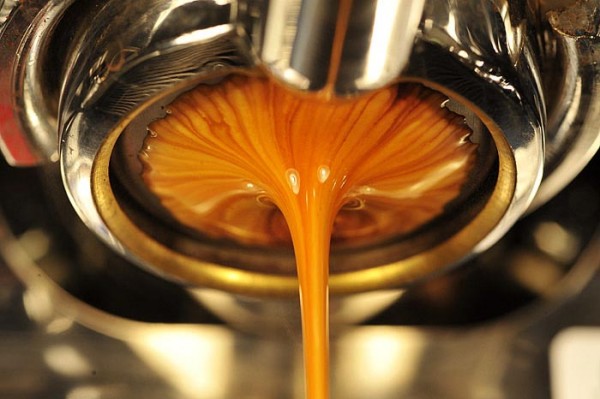
While it’s grown all over the world, 67% of all the coffee in the world is grown in the Americas. Coffee is the most sought-after commodity in the world only beat by crude oil. We Americans spend $74 billion dollars a year on coffee alone – that doesn’t include all the other caffeinated products – comprising 1.6% of the nation’s GDP and employing 1.7 million people. We rank 5th in the world in terms of consumption and 50% of Americans over the age of 18 drink coffee each day and on average we drink three and a half cups.
Yeah, we love the stuff!
Out of those hundreds of millions of cups of coffee, a significant number of those daily servings come in the form of one dear to my heart, the espresso. No – it’s not spelled or pronounced expresso, so don’t “axe” me again.
How is espresso different than coffee? Well, for starters its serving size is smaller, it is a bit thicker, has more dissolved solids and as every connoisseur knows, has a foam called crema on top which contributes to the tongue-feel and even flavor. In fact, the drink was originally called crema caffè. It is richer and stronger in flavor and has a bigger punch: more caffeine than regular coffee per serving. Espresso is part of many of the drinks you order including a Macchiato, latte, cappuccino, caffè mocha, or caffè Americano. If you frequent Portuguese restaurants, your Galão has it.
The term espresso refers to the high amount of pressure used to force the water through the fine grounds and it is done so very quickly when compared to drip brewing. The machine that does this was invented in 1884 by an Italian named Angelo Moriondo who just wanted to be able to handle the demand of impatient coffee drinkers in Italian cafes. His machine was a steam-driven “instantaneous” coffee beverage maker, and it originally made “pots” of coffee and not individual servings. That didn’t come until 1901 when another Italian named Luigi Bezzera patented a version that could produce single and double servings to a customer.
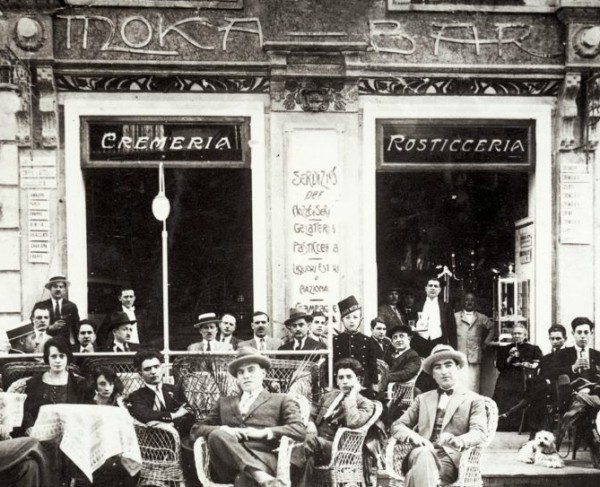
In the coming decades, Italian-Americans would serve espressos, but since necessity is the mother invention, they started to offer locals versions. Other Americans added ratios of ingredients or other ingredients all together and the cappuccino and latte were invented – the latter by Italian American Lino Meiorin in the 1950s. Thank goodness for Italian ingenuity!
Even the espresso has its variants and the best of all, in my opinion, is the café cubano or Cuban espresso. Typically using stronger roasts, the Cuban espresso cuts the strength and bitterness from the stiffer roasts by placing a bit of brown sugar or raw sugar in the cup that the steaming hot brew is dripping. This heat hitting the brown sugar “kisses” the flavor with a bit of sweetness – barely noticeable unless you are a regular espresso drinker. It is then vigorously mixed to get the afore-mentioned crema, which Cubans call espuma or espumita (baby/little foam).
In my opinion, there is no better caffeinated drink on the planet. Or solar system. Or universe. Or any reality even alternate ones. Ok, I don’t know that for sure, but it is certainly as good as it gets here on earth. I bet, even Giorgio Tsoukalos would agree with me.
Anyhow, who makes the best espressos in greater New Bedford? I don’t drink lattes, cappuccino, Macchiatos, or coffee – I only drink espressos and I have tried them anywhere and everywhere in the area. These are not the only spots that serve great espressos, just the spots I frequent most and who make the best. This, as stated earlier, is my opinion and if you disagree or if you know of a place I should check out because you think it should be on the list, please let me know!

Dartmouth’s Mirasol’s Cafe has been one of my favorite go-to spots in the region, since it opened. Owners Rich and Meegan and the entire staff are the pulse and life that make the cafe too irresistible to visit regularly. There are too many items on (and off) the menu worth mentioning – how about the whole thing? However, this isn’t a review of establishments, just about espressos and Sgt. Friday, wants us to stick to “Just the facts, ma’am.”
While locals are caught in a tractor beam that pulls people in for the beloved Chippi, I go there for the Cuban Espresso. You can get them in a variety of sizes and on ice. This is where I was introduced to the Cuban Espresso and had my first. Very few places make a better crema, so for you crema lovers, hop in your cars and race to Dartmouth. Ram through the traffic in the parking lot, push aside everyone in the line that wraps around the building and ends somewhere around Bishop Stang, and ride the winged llama over a rainbow until you arrive in one of the Seven Heavens. That’s just the first sip!
Sorry, you can have soy, almond, or hemp added to your drinks, but not ayahuasca.

Don’t let the name fool you. Those in the know, know. Holiday Bakery is actually a legitimate, genuine Portuguese bakery and cafe. The women behind the counter are all from Portugal and though I’ve never been in the bakery in the back, I imagine it is a team of avós with magic wands baking delicious breads and pastries for jaw-dropping low prices.
While Holiday Bakery specializes in breads and pastries, they do offer a few shelves of imported Portuguese goods and coffee and espressos. There is an indoor patio with 2-3 small tables, so you can sit and enjoy their amazing pastries while sipping some of the best espresso in greater New Bedford. While it may just be a standard espresso from Portugal, it is made perfectly and with the loves of a million avós. Name a better ingredient to a recipe that grandma’s love? You can’t!
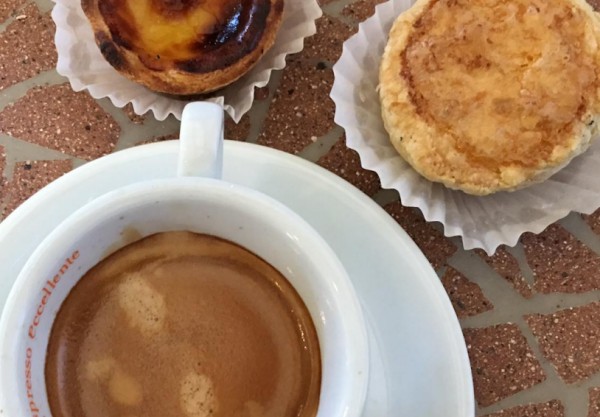
The new kids on the block, Dartmouth’s Java Shack are doing a lot of great things from mouth-watering food, friendly service, devilish pastries, drinks which include Kombucha on tap, and much more. What matters in my life is the quality of espresso and whether they “pull” a decent one. Why, yes. Yes, they do.
Don’t be fooled: Java Shack might be the newest addition to the cafe scene, but the entire staff – owners, chef, and baristas – are veterans who know their stuff. They know the best bean to buy, the proper grind, and how to make it consistently perfect. With welcoming faces and equally warm decor, you can sip the world’s worries away.

Don’t hate me. Starbucks provides a great working space, always working WiFi, friendly baristas and rewards for free food and drinks. OK, I’m a sellout.
While I don’t order the traditional espresso here, I also don’t order the venti iced caramel unicorn Macchiato, 2 shots of vanilla creme, extra extra Stevia, 1 Raw Sugar, Sweet & Low, splash of soy, splash of almond Frappuccino, shaken, not stirred. This is the only place where I get my espresso iced. I get the iced Double Shot Espresso, which is actually 5 shots when you order it in the venti size. So, it’s like an iced quintuple shot espresso.
Outside of selling soul to the devil myself for rewards, this drink is actually delicious and I’ve convinced a few other souls to try it and sell their own souls.
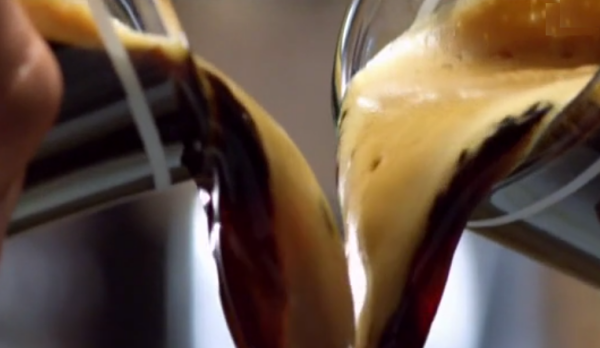
Yes, Novo Mondo is not only one of the best restaurants, Portuguese or otherwise, in all of the region, they also serve a world-class espresso. I’ve never been to Portugal, but I’d imagine that walking into Novo Mondo isn’t very different from walking into a cafe or luncheon somewhere in Portugual or the Islands.
Walking in, you will hear Portuguese spoking more than you will hear English spoken. That’s always a good sign when visiting a Portuguese restaurant, because they want that slice of back home. While the small restaurant isn’t conducive to just ordering an espresso and then sitting down and relaxing, there is nothing stopping you from meandering up to the counter and slamming back a single or double or even lingering there for a “few.” You can close your eyes, soak in the aromas of master cooks, while listening to Portuguese banter and transport yourself to a cafe in Portugal somewhere. It’s a great experience! Hi Carla!
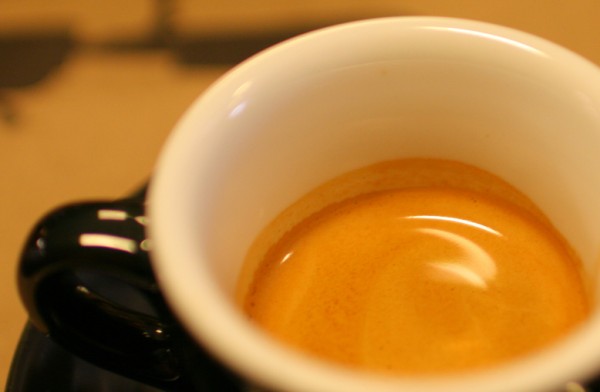
The Flour Girls Baking Company in Fairhaven is not only the best spot to get espresso…well, it’s the only spot. Don’t mean to shine shade on the chains, but Jill and company pull one of the best espressos in the area. And sandwiches. And smoothies. And breakfast. And scones. And pastries. And cakes. And…
Hands down, the Flour Girls is one of the best cafes around with an eclectic menu, friendly staff, and lots of pizzaz. An ideal place to chow down, get some work or reading done, and enjoy a stiff, rich espresso…or five.
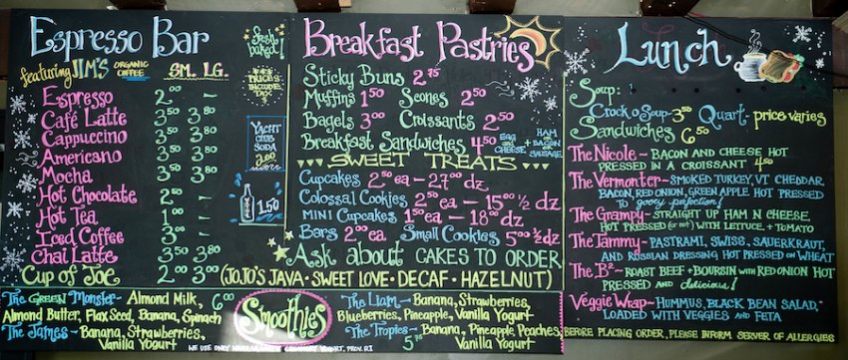
In this series, we hope to highlight and showcase in as interesting a way as possible, the stories behind our favorite, mouth-watering local dishes. While we’ll focus on greater New Bedford and the South Coast, we will occasionally “travel” to places like Plymouth, Providence or even Boston. I will attempt to keep it light-hearted, fun, and easy to read. While I can’t promise to keep you compelled and pull you along with prose – that would take a professional writer – I will promise to be liberal with the drool-inducing images of these dishes.
I grew up in a Sicilian household where everyone – man, woman, child – was participating in preparing meals. It was a “trick” to get everyone together, talking, laughing and of course, the occasional heated debate. Food was a huge part of our identity, where we came from, who we were. There was something special about the atmosphere that revolved around a meal that we prepared.
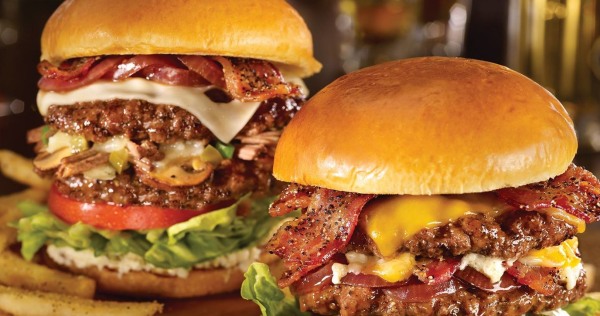
This is certainly not unique to an Italian or Sicilian household. Every ethnic group in the country has a proud culinary tradition that they grew up around. You can easily replace “Sicilian” with Irish, Vietnamese, Portuguese, Ethiopian, Greek or anything else. This is why food as a topic is always so popular. We humans love our food and that passion goes beyond the gustatory or taste – we crave the aromas, delight in the presentation, are fueled by the atmosphere, and relish – pardon the pun – discussion about our favorite dishes, restaurants or cuisines.
One thing that is often not discussed – is glossed over, or barely touched upon – is the history or background of these dishes. Now, to some, this conjures up the voice of the guy from the “dry eyes” commercial. The terms, for many, are synonymous with “boring,” “dull,” or “It’s time to go.” However, the background can be interesting, fun, or funny and it can be so without being facetious, dumbed-down or popular. I will make every attempt to maintain a fresh balance with those elements in this series.
As always, feedback is encouraged. Anecdotes are wanted. Discussion is paramount. Please join in.
_______________________________________________________________________
Ah, the hamburger, the dish with a million faces. It can be humble or grandiose, basic or extravagant, affordable or one with which you might need to leverage your house to get a small loan. It can have next to nothing on it or more other ingredients than the burger itself weighs. Either way, America and the world has a love affair with the hamburger and it has become as American as baseball, apple pie, and politics.
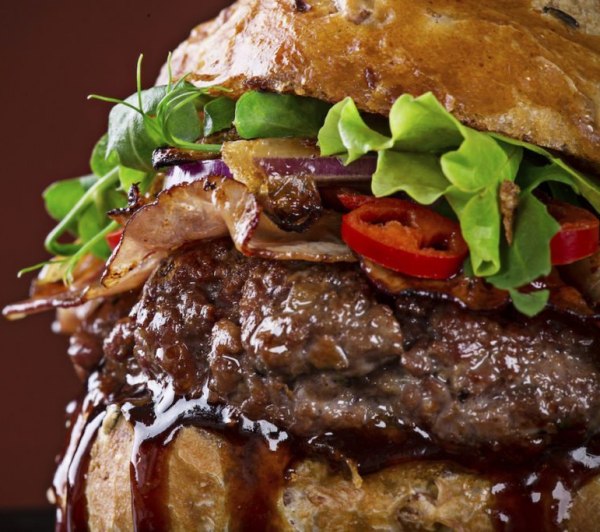
Why do we love this sandwich so much? Some of us love it so much that if someone said that they could eat a hamburger every day it wouldn’t sound like crazy talk at all. In fact, they’d probably say “Me, too!”
The hamburger joins the short list of elite dishes and keeps company with the likes of pizza, hot dogs, chowder, fried chicken, et al. The proof is in the seemingly innocuous question “Who makes the best _____?” You’ll not only get plenty of different answers but a debate, even an argument will ensue. Don’t be surprised if insults and even threats fly about as well.
Like, pizza, the hamburger’s popularity has much to do with how customizable it is. The gamut ranges from just some ketchup or perhaps a slice of melted cheese, to a veritable mountain of multiple patties, trimmings, sauces, and toppings making the sandwich as big as your head. The “bread” layers can be a classic bun or fried bread, a croissant, pretzel, cheese roll, even ramen noodle, grilled cheese sandwiches, or donuts. The patty can be all sorts of things, like black beans, mushrooms, tofu, turkey, or veggie but we’ll narrow the scope to the classic ground beef patty.
While the hamburger had humble beginnings – chopping up the least expensive, lowest quality cuts of meats and dressing it up making it more edible with a host of trimmings and toppings – it has also ventured out beyond its blue-collar beginnings into the “white” collar territory with gourmet, astronomically and outrageously priced versions. You can find the hamburger at a greasy spoon and a Michelin star restaurant, and there are as many versions as there are restaurants or grills at home. Foodies around the world are always eager to find a new restaurant’s hamburger or a variation they never tried and every foodie’s bucket list will have a hamburger on it somewhere.

Don’t make fun of his swag – the 4th Earl of Sandwich, John Montagu’s first world problems led to the hamburg.
While food historians (yes, there is such a thing and they take this sort of stuff seriously) don’t all agree on where the hamburger had its start since references to something similar go as far back as 4th century A.D. Rome with their isicia omentata – they are almost unanimous in that it is a very, distinctly American dish.
Incidentally, ancient Rome’s isicia omentata, was a baked minced meat patty with “…pine kernels, black and green peppercorns, and white wine.” Yum, pine kernels. That may be the only version of burger today that hasn’t been done. The term sandwich itself wasn’t “invented” until 1765 after an unknown chef prepared this marvelous creation for the …ahem… 4th Earl of Sandwich, John Montagu.
While there is a Sandwich here in Massachusetts, there weren’t Earls and this Sandwich was a town in Kent in the Southwest of England. Incidentally, the Russell family which helped create the village of Bedford which would become the city today traces its roots to the Duke of Bedford. Dukes, Earls, …oh, sandwiches. Back to sandwiches. This genteel, first First World Problem-haver, the 4th Earl of Sandwich did not want to soil his precious hands while scoffing meats, cheeses, jams and other goodies, so his chef decided to place them between two slices of bread, creating the first historical mention of the term.
If only that chef would have known the types of sandwiches people would create like something with 6 patties, onion rings, french fries, wrapped in bacon served on a donut and topped with a grilled cheese. He would have had a heart attack without even having eaten one.

Elizabeth Leslie was the first person to put a hamburger recipe in a cookbook.
Anyhow, the hamburger itself had its first historical mention in a cookbook by the prolific Elizabeth Leslie in 1840. OK guys – keep the kitchen and “sammich” jokes to yourself. Remember, you may not have ever had a hamburger in your life if it wasn’t for her. Pay tribute and homage to her greatness. After Leslie’s cookbook this glorious, glorious sandwich had its start in America’s “greasy spoon” mom & pop diners, but really only officially reached the general populace in the 1920s through the White Castle restaurant chain.
Now, some of you are thinking “Why the heck is it called a hamburger then? Is there a German Duke or Earl of Hamburg somewhere in the equation? How and when did the Earl of Sandwich and Duke of Hamburg collide?”
Well, there is Russian collusion and immigration here – don’t worry, no need to grab your tinfoil hats – I abhor politics. Russian immigrants were flocking to Germany in the middle of the 19th century and so many came to Hamburg that it was even dubbed “The Russian Port.” Or I should say what would become Germany since at that time the unification of Germany hadn’t happened yet and was only a confederate of 39 states.
Anyhow, Hamburg being a port city was like most port cities throughout history: an entry point for migrants. These immigrants brought with them tartare, a dish of raw, ground or minced beef or horsemeat. I don’t know about you, but I’m glad that the latter choice didn’t catch on.
While the word tartare is equated with French cuisine where it is served with a raw egg on top and perhaps some capers and onion, the word refers to the Turkic-speaking, Russian Tatar culture that brought the dish and variants with them to Hamburg. As happens in all melting pot cities cuisines from various cultures mingle, fuse and adapt and locals not too keen on the raw meat would simply cook it and serve it, called a “Hamburger Rundstück,” or Hamburg Steak. At this point in Hamburg’s history it was sans buns, and it isn’t a hamburger, unless you’ve got buns, hun.
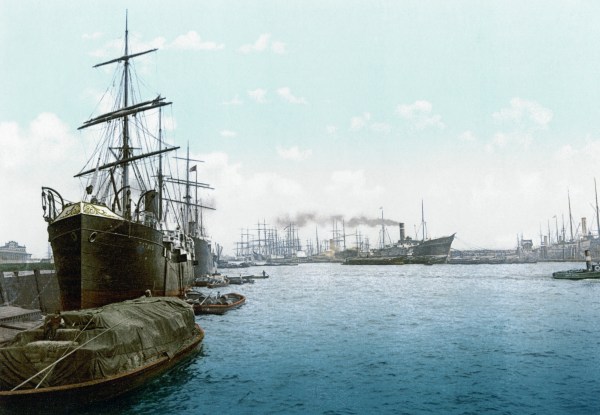
The “Russian Port” of Hamburg in 1862.
Now, with a short jaunt down the Elbe, you hit the Atlantic and can come to the New World. Incidentally, again, Hamburg is a 6-hour drive from Leiden, Netherlands – the port English separatist Puritans used to embark from aboard the Mayflower. When America declared to the world “Give me your tired, your poor, your huddled masses yearning to breathe free…” The Russians along with many ethnic cultures, left from the “The Russian Port” of Hamburg, came to America and brought their tartare recipes with them and the Germans that came brought their Hamburger Rundstück. So, thank the Russians for their, um, collaboration and contribution to world cuisine that helped create the hamburger we love so much today.
Most came through Ellis Island and so New York became the site of the first restaurants to serve cuisines that would appeal to incoming immigrants. Naturally, the restaurants would serve the hamburger steak sans buns and the tartare to appeal to those that came from Hamburg, so they added a Hamburg-style American fillet on their menus.
Once some clever souls figured out that you could use cheap cuts of meat or trimmings, then add other ingredients like onion making it affordable, the dish could reach the masses and it really caught on. In the 1930s, the American love affair with shortening and abbreviating names, was in full effect and the term hamburger or just hamburg came into common use.
So, when did the hamburger leave its nakedness and become the hamburger sandwich? No one knows. No boos, please – I don’t create history, just share it. The history of placing hamburger meat between two buns is one of speculation ride with anecdotes, urban legends, and myths. I mean, who doesn’t want credit for creating the hamburger sandwich? There are stories on top of stories, but I don’t think it would take too much thought to put the two together and people have likely been doing it since time immemorial.
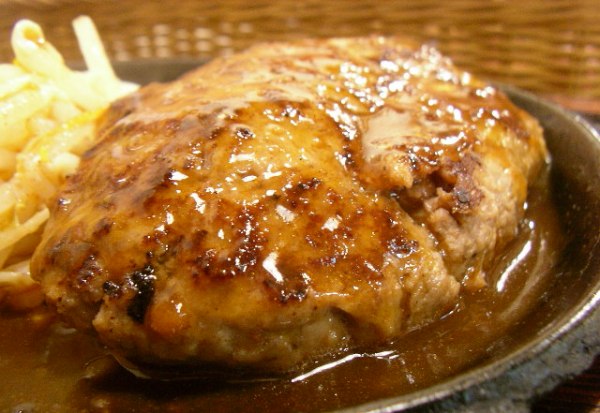
The Hamburg Steak made popular in New York in the 19th century to attract immigrants.
Honestly, who cares? All that matters is that it exists. It’s here. You can make or get one right at one or more places within walking distance of where you are right now. In fact, the hamburger is a global phenomenon and you can get them anywhere in the world and in a dizzying array of variations.
Did someone say, “variations”? Every part of a hamburger can be substituted for just about anything. You can swap the buns for the afore-mentioned grilled cheese, waffle, fried PBJ or donuts. Sauces can be as “normal” as ketchup, mustard and relish, slightly different like Bacon jam, aioli, BBQ or Whiskey sauces or even far-out like yogurt. Ew.
Trimmings or toppings typically include any type of cheese, lettuce, tomato or onions, however you are only limited by your imagination and it’s not unheard of to hear about taste-buds destroying hot peppers, egg, French Fries, pork belly, onion rings, pancetta or prosciutto. There are even stories told around campfires that mention placing chile rellenos, berries, tater tots, caviar, soft-shell crabs even gold-leaf.
Then, of course, there is the matter of size and signature. Restaurants will market a hamburger that they invented to separate themselves from other restaurants, or they will offer a massive burger or one with multiple patties.
One of the most insane burgers I have come across are the ones served at the Heart Attack Grill on Las Vegas, Nevada. Fat, grease, cheese, sugar, calories, cholesterol, salt? Who cares!? Take it to the next level by adding as much of those things as possible in one burger and have it served to you by a waitstaff in nurse gowns and hospital scrubs. You can have these heart attack inducing megaburgers called “Bypass” burgers that range as high as 20,000 calories with a side of “Flatliner” fries cooked in lard. Heck, might as well put the “Flatliner” Fries in the burger. Wash it down with a diet soda, of course.

McGuire’s Irish Pub in Pensacola, FL offers a “…three-quarter-pounder Black Angus beef burger covered in a scoop of hot fudge-drizzled vanilla ice cream.” Say, what?
The Ramen Burger invented by Japanese-American Keizo Shimamoto uses Ramen noodles formed into the bun and the patty is seared in Sesame oil. At Boston Burger Company you can get, The King – a burger that is topped with bacon, peanut butter, and fried bananas, then dusted with cinnamon and sugar. Chicago’s Kuma’s Corner offers the “Ghost” burger, as in the “Holy Ghost. You get a hamburger with goat shoulder, Ghost pepper aioli, slathered in a red wine reduction called “The Blood Of Christ” and a communion wafer. Heilege Scheiße!
Mallie’s Sports Grill & Bar in Detroit is home to the world’s largest hamburger at 1,794lbs with 300lbs of that being the toppings and 250lbs being bun. Those are some big buns, hun. They planned it over the course of 4 years and the burger was 5′ wide by 3′ tall. Have $7,799 to blow? Give the restaurant 3 days notice and head there.
The 666 Burger food truck in New York City, used to sell a “f***ing burger filled and topped with rich people sh**” aptly called “The Douchebag Burger” that cost $666. What are the toppings that make a douchebag happy? Well, like it says in the description, rich people “sh**” like a Kobe burger patty, topped with lobster caviar, Himalayan rock salt, foie gras and it’s served wrapped in greasy $100 bills.
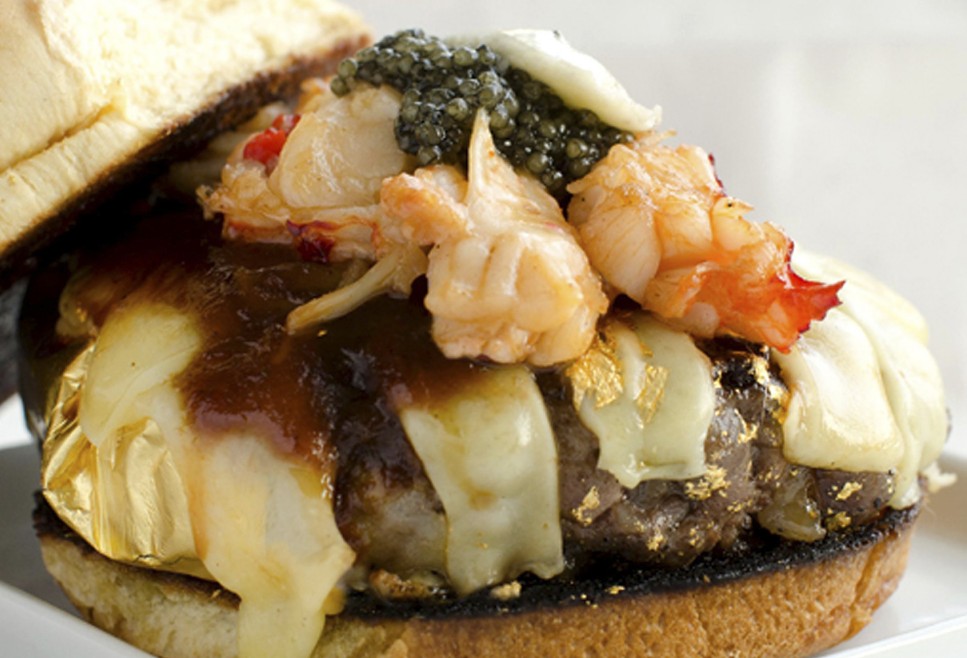
Douchebag Burger anyone?
The most expensive burger I could find was the $5,000 FleurBurger served at Las Vegas’s Fleur restaurant inside Mandalay Bay Casino. It gets things we’ve already come across like Kobe beef and foie gras, but what makes it so expensive is the huge quantities of expensive black truffles and it’s paired with a rare bottle of Château Pétrus, a Merlot wine made in Bordeaux, France. The wine is served in fancy, high-end Ichendorf Brunello wine glasses.
I hope you enjoyed this little merger of gastronomy, history and cultures. History can be interesting and fun, and often it’s as interesting or more so, than fiction.
_______________________________________________________
Have a dish you absolutely love and want to know how it came about? A dish that your heritage has produced? Comment on the article or social media post, or inbox us at info@newbedfordguide.com.
After 23 years of perfecting the art of winemaking, Newport Vineyards & the Nunes family are thrilled to announce the opening of Taproot Brewing Co. which officially opened on June 20th.
“I’ve been making beer longer than I’ve been making wine,” says Newport Vineyards owner John Nunes. “Over the last few years Newport Vineyards has transformed into a beverage, culinary and events destination; adding craft beer was a natural fit.”
Taproot Brewing Co. is equipped with a state-of-the-art seven-barrel brewhouse, located just as you come through the main entrance of the winery. The focus is unfiltered hopforward beers made in small batches and meant to be enjoyed immediately for the ultimate freshness. There is an in-house canning system allowing guests to take packs of beer home with them.
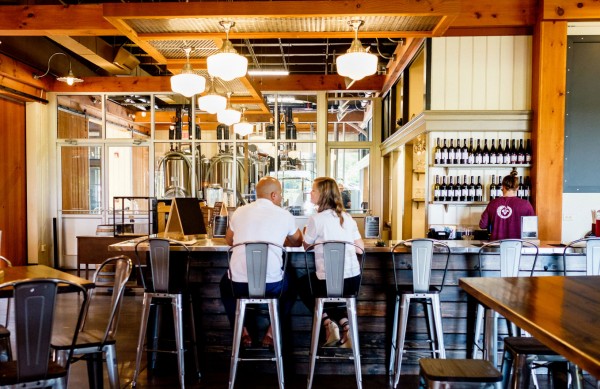
Taproot beer is on tap at Brix Restaurant, and available to all guests at the winery. Vineyard Executive Chef Andy Teixeira is very enthusiastic about the brewing venture being integral to his work, “We are working with some of our farm partners to donate the spent grain from the brewery for compost and feed.” Lunch is served at the brewery, with views overlooking the winery and vineyards, offering a slight twist to the current lunch menu to include beer pairings, in addition to wine pairing options.
The Taproot name not only represents the obvious nod to the Nunes family vineyard roots, but also symbolizes their history rooted in Aquidneck Island agriculture. The vineyard is situated on preserved farmland that has been in the Nunes family for over 100 years. Just as a taproot anchors a plant to the ground encouraging more roots to stem from it, the family’s rich farming roots have inspired other elements of the company to grow.
TAPROOM HOURS
Sunday: 11:00 a.m. – 5:00 p.m.
Monday: 11:00 a.m. – 5:00 p.m.
Tuesday – Thursday: 11:00 a.m. – 9:00 p.m.*
*Pints + flights available upstairs at Brix after 5pm.
Friday – Saturday: 11:00 a.m. – 4:00 p.m.*
*Pints + flights available upstairs at Brix after 4pm.
EVENTS:
Tuesdays:
Beer + Burger night in Brix. $15 for a beer (choose from 6 on draft) and burger (3 options). Brix is open 5pm – 9pm on Tuesdays. Details here.
Wednesdays:
-Extended Taproom hours + live music 5pm – 8pm (No tickets required, just come by! (Beverages and light bites available for purchase.) See artist schedule on the Events page here.
-Flight Night in Brix. $10 beer flights (and $10 wine flights, cheeseboards and small plates). Brix is open 5pm – 9pm on Wednesdays. Details here.
Follow Taproot Brewing Co. on Facebook: https://www.facebook.com/taprootbeer/ and Instagram @TaprootBeer.
For more details, please visit their website. See more photos of the brewery, beer and food here.
___________________________________________________
About Newport Vineyards
Founded by brothers John & Paul Nunes in 1995, Newport Vineyards is the largest grower of grapes in New England. The winery produces nearly 30,000 cases of estate-grown wine each year through sustainable farming methods on 75 acres of historically
preserved farmland. Following a multi-million dollar renovation completed in 2015, the winery has become a culinary and wine destination offering multiple experiences including daily tours and tastings, 100% from scratch culinary programs at Brix Restaurant and Taproot Brewery, The Marketplace, seasonal live music, private events and year-round public activities.
Ready to cool off with a delicious drink? Here’s a look at Java Shack’s Mudslide Latte.
Here’s a look at Restaurante Algarve’s shrimp Mozambique! They are located on 128 County Street in the south end of New Bedford.
The New Bedford Feast of the Blessed Sacrament, a.k.a. the Portuguese Feast, a.k.a. Madeira Feast is the largest event New Bedford has every year. More than that, it is the largest Portuguese feast in the world and the largest ethnic festival in New England. The feast was founded in 1915 by four Madeiran immigrants who wanted to recreate the festivities of their home island.
Here is an overview of the feast which has become a major attraction for visitors from all over who come to celebrate the Portuguese culture through food, drink, and entertainment.
The “feast” is a four-day event, officially kicking off at 5:30 PM on Thursday, August 2nd with the assembly of the Festeiros (Feast Committee Members) at the intersection of Earle Street and Acushnet Avenue.
Led by the Feast President, the Festeiros march in a special procession down Earle Street to Our Lady of Immaculate Conception Church which is located at the corner of Earle Street and Madeira Avenue. At the church, Father Daniel O. Reis celebrates a special Benediction to the Blessed Sacrament.

Each evening the feast grounds will close at 11:45pm and open the next day at noon.
On Saturday, however the 5K road race will begin at 10:00am with a check-in time of 8:30am. The course goes through the historic north end and finishes through the famous arches at Madeira Field. The first 250 entrants get a free t-shirt, but all participants are treated to food and drink. The top three male and female winners will receive medals and cash prizes of $250.00 for 1st place, $150.00 for 2nd place and $75.00 for 3rd place. The age categories are 14 and under, 15-18, 19-29, 30-39, 40-49, 50-59, 60-69, 70 and over.
The road race is followed by Fun & Family Day from NOON-4:00pm. A ton of fun events and activities are planned including face painting, a traveling science museum, music by the Toe Jam Puppet Band, carnival rides, a free book, flash mob and routine by Dance Xtreme, and more.
The last day of the feast is Sunday and will feature a parade at 2:00pm.
Want to win some prizes like a trip to the Azores and Madeira with hotel and airfare, tickets to a Patriots, Red Sox or Celtics game, bicycles, a scooter, a golf package or up to $1,000 in gift certificates to your favorite local restaurants? Simply buy some raffle tickets for a donation of $2 or $5 will get you a book of 5.
There is no charge for admission and the entertainment is free thanks to the hard work of the committee members who comprise the 2018 Feast of the Blessed Sacrament Committee. Feast members come from all over the country to plan the feast each year, some as far away as California and Florida. Some of the members will be traveling from across the U.S., Canada, Europe, and South Africa to attend the feast, but in the meantime, they have had family members representing them at the committee meetings.
While admission is free to walk around and watch the entertainment or visit the Museum of Madeiran Heritage there are also many vendors on the grounds selling everything from handmade Madeiran souvenirs to cigars. Of course, food, carnival rides, and beverages are also an additional cost.
Prices of food are kept reasonable, and there is a great deal of variety to choose from. Tickets cost a dollar each and can be purchased at many machines located throughout the grounds by placing a five, ten or twenty dollar bill inside. Tickets are non-refundable. There are also stands with employees who sell the tickets.
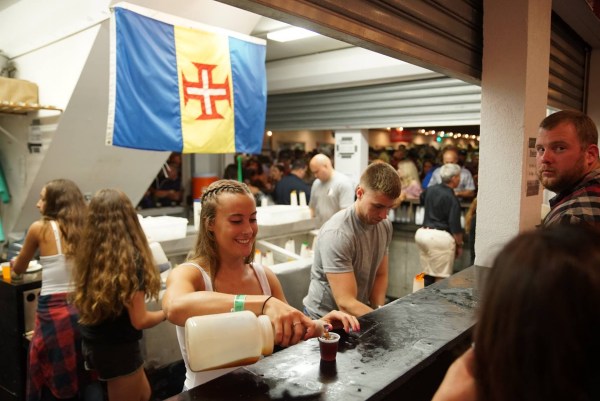
To give you a general idea of the prices of items at the feast, a full meal is 12 tickets, most sandwiches are around four tickets, and a soda or a water goes for one ticket. If you’re over 21, an impressive selection of alcoholic beverages is available to choose from.
On Family Fun Day – which is Saturday – food is FREE food for kids under 12: burgers, hot doga, French fries and a soda from noon-4:00pm. Also on Saturday in the same time frame, seniors get a choice-of-menu dinner at a 50% discount. Choices include roast beef, chicken, fish, cacoila, and the somewhat more exotic roast goat or rabbit, traditional Portuguese favorites.
One of the greatest features of the feast is the delicious Portuguese fare. There are many food stands located throughout Madeira Field that serve your favorites from the simple delights of linguica and cacoila sandwiches to full on Portuguese cuisine plates of chicken, beef, goat or tuna with potatoes, rice, and vegetables.
Another major culinary draw is the Carne de Espeto, a massive, 40-foot barbecue pit where beef sirloin cubes can be cooked over an open flame on massive skewers. This is hard to miss since the aroma is absolutely mouthwatering. Visitors are able to buy the meat for eight tickets a pound and a delicious aromatic salt is provided to cook with.

Visitors are then able to roast their own dinner over the gas-fired lava rock grill. Mr. Camara, (who has been a part of the organization since 1982) advised me that if someone tells you to pour Madeira wine on the meat it is not advisable (it does not help the flavor and causes the meat to burn faster!)
Other items that will be featured at the feast include Milho Frito, fried cornmeal, garlic and finely shredded kale make this the perfect treat to go with Carne de Espeto, pasteis de Bacalau (codfish cakes), atum, cabra, favas, coelho, carne de vinho e alhos, malassadas, tremocos and other Portuguese classics. There will also be ice-cold fresh fruit cups, the perfect way to cool down for health-conscious attendees.
In case you are not accustomed to the flavorful cooking style of Portuguese cuisine, go to the Food & Drink page of the Portuguese Feast website for definitions of some of the food you might expect to see.
One of the draws of the feast is the consumption of Madeira wine, which is a central part of the festivities as it is part of a long tradition. Madeira wine is a sweet, fortified red wine. Genuine Madeira wine is made on the island of Madeira, and exportation of actual barrels are restricted due to regulations. However, thanks to a special agreement made between feast officials and the President of Madeira, casks are able to be delivered to New Bedford and served for the weekend, making this a very rare treat for those who attend.
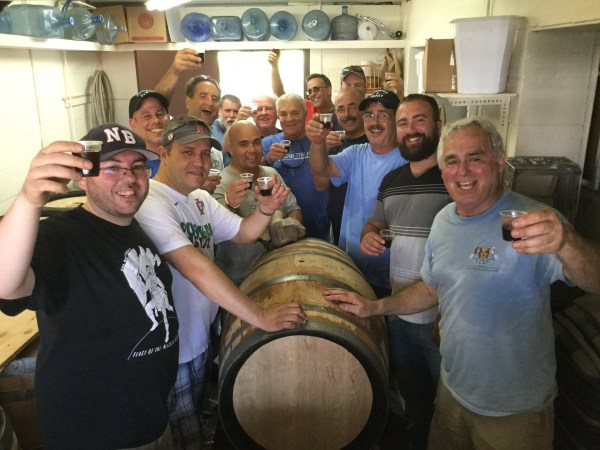
For those who don’t find that the taste of Madeira wine suits their pallet, there are a great variety of additional options including a full liquor bar for mix drinks and frozen drinks. Alcohol stands also serve sangria and white wine and Budweiser beer is on tap.
If you wish to partake in the consumption of alcoholic beverages, you will need to have your ID scanned when you enter the feast grounds in order to receive a wristband that proves you are legally old enough to be served.
There will be additional ID stations at this year’s feast due to the anticipated increase in numbers of attendees.
There is a great deal of quality free entertainment at the feast each year from Portuguese and American cultures. There are four separate stages of entertainment on the main grounds and a “Fado” stage at the Museum of Madeiran Heritage Courtyard Venue – these performances will be featuring a Portuguese genre of music that can be traced back to the 1820s but is believed to be even older than that.
One of the cultural acts that you may see take the stage at Madeira field is Groupo Folclorico Clube Madeirense S.S. Sacramento. This group of dancers presents traditional dancing performances to authentic Madeiran music and in traditional clothing. These performances are always very spirited and interesting to see.
There will be many bands on the smaller stages during the feast, but the largest stage is reserved for a special performance at 10:00 each night by a headliner band. For those old school metal heads, you will be excited to know that Queensryche will be headlining this year!
For more information on when and where events will be taking place, go to the Portuguese Feast Entertainment Schedule.

____________________________________________________
Time, Act and Stage
6:30pm-7:30pm: D’Alma (2)
7:00pm-10:00pm: Freeze Pops (3)
7:00pm-10:00pm: Somethin’ Else (4)
7:45pm-8:45pm: Grupo Folclorico do Clube Madeirense S.S. Sacramento (1)
8:45pm-9:45pm: D’Alma (2)
10:00pm-11:30pm: Queensryche (1)
Time, Act and Stage
1:00pm-3:00pm: Radio Honey (1)
1:00pm-3:00pm: Business Time (4)
3:00pm-5:00pm: No Way Out (2)
4:00pm-7:00pm: Shattered (3)
4:00pm-6:30pm: Ralph Kingsley (4)
5:00pm-7:00pm: Back In The Day (1)
7:00pm-8:00pm: Edge (2)
7:00pm-10:00pm: LIKK (3)
7:00pm-10:00pm: Craig Demello (4)
8:00pm-9:00pm: Grupo Folclorico do Clube Madeirense S.S. Sacramento (1)
9:00pm-10:00pm: Edge (2)
10:00pm-11:30pm: Wild Nites (1)
Time, Act and Stage
12:00pm-4:00pm: Family Fun Day (Kid’s Day)
12:00pm-1:00pm: Toe Jam Puppet Band (1)
1:00pm-2:00pm: Cool Banana Wig (1)
1:00pm-4:00pm: Breanna Pacheco (4)
3:00pm-5:00pm: Morissey Blvd (2)
4:00pm-7:00pm: Real Deal (3)
4:30pm-6:30pm: Giulianna Amaral (4)
5:00-7:00pm: Jammin’ (Bob Marley Tribute Band) (1)
7:00pm-8:00pm: Dead Til Friday (2)
7:00pm-10:00pm: Judas Rising (3)
7:00pm-10:00pm: Grace Morrison (4)
8:00pm-9:00pm: Grupo Folclorico do Clube Madeirense S.S. Sacramento (1)
9:00pm-9:30pm: Dead Til Friday (2)
9:30pm-11:30pm: Eratoxica (1)
Time, Act and Stage
12:30pm-2:30pm: Steddie (2)
1:00pm-4:00pm: Bettty (4)
2:00pm: Parade
3:00pm-6:00pm: Whiskey Affliction (3)
4:00pm-7:00pm: Matt Silva (4)
5:00pm-6:30pm: D’Alma (1)
6:30pm-7:30pm: Get Lucky (2)
7:00pm-10:00pm: Ageless (3)
7:00pm-9:30pm: Carson (4)
7:30pm-8:30pm: Grupo Folclorico do Clube Madeirense S.S. Sacramento (1)
8:30pm-9:30pm: Get Lucky (2)
9:30pm-11:30pm: Ultimate Queen Celebration (1)
_____________________________________________________________
Thursday, August 2, 2018 (8:00pm–11:30pm)
• Sonya Bettencourt, Fado Singer
• Jeremias Macedo, Fado Singer
• Viriato Ferreira, Viola Classica
• Manuel Leite, Guitarra Portuguesa
Friday, August 3, 2018 (7:30pm–11:30pm)
• Ana Vinagre, Fado Singer
• Viriato Ferreira, Viola Classica
• Manuel Leite, Guitarra Portuguesa
Saturday, August 4, 2018 (7:30pm–11:30pm)
• Sonya Bettencourt, Fado Singer
• Carlos Furtado, Fado Singer
• Viriato Ferreira, Viola Classica
• Manuel Leite, Guitarra Portuguesa
Sunday, August 5, 2018
4:00pm-7:00pm: Rebecca Correia (Singer-songwriter & guitarist)
7:30pm-10:30pm: Jordan Paiva (Josh Groban)
To see more and keep abreast of changes, check out the Feast of the Blessed Sacrament’s entertainment schedule page.
Since the Madeira feast involves alcohol consumption, some readers may be wondering if it is a family-appropriate event. You will be glad to know that family values are integral to the foundation of the feast. While it is probably not advisable to bring young children later in the night due to large crowds and loud music, it should be mentioned that there are many features of the feast that children will love. Also, the feast takes great measures to prohibit underage drinking. All who wish to consume alcoholic beverages are required to undergo a license verification process in order to receive a specially printed wristband.
Additional security precautions are always taken due to its size and significance. Few people realize this, but the Feast grounds are wired with such advanced cameras that all feast goers are on at least two cameras at any given time.

A cool part of the feast is that it features carnival rides and games all weekend. Saturday is probably the best day for families with young children thanks to Fun & Family Day which follows the annual 5k road race. Fun & Family Day kicks off at noon and ends at four, featuring special live entertainment for children, face painting, traveling science museum, Flash Mob, and routine by Dance Xtreme, Toe Jam Puppet Band, and more. Kids under twelve can also receive a free hot dog or hamburger, French fries, and a soda.
For senior citizens in the community, there is “Senior Citizen Afternoon” which also takes place on Saturday from noon to 4 pm. During this time a shuttle is being offered (courtesy of the City of New Bedford) from the parking lot of Lincoln Elementary on Saturday so that seniors can attend the event without having to worry about parking. On this day they are also offered a special deal of choice-of-menu dinner at a 50% discount! Menu choices include roast beef, chicken, fish, cacoila, and the somewhat more exotic roast goat or rabbit – traditional Portuguese favorites. Only 6 dollars instead of 12 (eat in only). Special entertainment is featured as well.
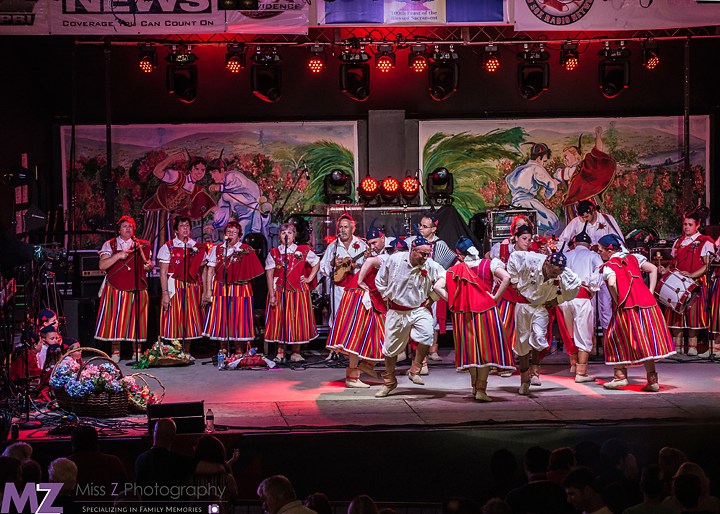
The Feast of the Blessed Sacrament gains its roots from the island of Madeira which is located 390 miles off the coast of Morocco. Traditionally, each Roman Catholic parish in Madeira would observe a festival to celebrate their patron saint. A committee of four men called festeiros would be responsible for preparing the village for the celebration by decorating the streets, contracting entertainment (often in the form of a brass band and fireworks) and holding a ceremonial meal after mass on Sunday.
There are many versions of the tale of why the Feast of the Blessed Sacrament was first begun in New Bedford over 100 years ago. What is certain, however, is that the feast was initiated as a means of preserving basic values of the Madeiran culture. Of course, since it was first begun the feast has changed in many ways to accommodate thousands of eager participants and modern elements of celebration.
While there have been many changes in the feast, many aspects still remain central to the celebration. The tradition of Madeira wine is a very old one, dating back to the 15th Century when the Malvasia vine was planted on the island of Madeira to see it would yield an alternative supply of wine for England. When growth was successful Madeira wine quickly took to the market, but did not become a major export until many years later. It wasn’t until the 16th Century that the flavor we know of today was created when they discovered that the flavor of the wine was actually improved by being repeatedly heated up. Follow the link for more information on the history of Madeira wine.
The religious aspect of the feast also remains a part of proceedings. As it did in 1915, the feast still takes place near Our Lady of Immaculate Conception, which is located on the corner of Earle and Madeira Street in New Bedford. The Portuguese feast pays homage to its religious traditions by beginning the weekend festivities with a procession to the church where Father Daniel O. Reis gives a Benediction to the Blessed Sacrament. The last day of the feast starts with Sunday Mass at Our Lady of Immaculate Conception and “the Festeiros, Club Madeirense S. S. Sacramento, Inc. members, and all of the many volunteers receive the blessings of the church for their many hours of work devoted to achieving a successful Feast and for being respectful of its religious origins”. Throughout the weekend the church also hosts a wonderful musical series of organ music and vocalists. The details of this schedule are still being finalized.
Most of the events take place at Madeira Field, which is a permanent location in New Bedford’s north end, which comes to life one weekend a year for the festivities. The address of Madeira Field is 50 Madeira Avenue, New Bedford, MA (88 Tinkham Street on your GPS). Parking can be a bit tricky, you may have to plan to search a bit to find a spot and walk a few blocks, or pay to park in a nearby private lot.
,center>
The grounds on which the Feast of the Blessed Sacrament takes place are quite expansive and easy to lose people in. Be sure you have a plan for finding lost party members whether it be by cell phone or a designated area to meet up at.
When entering the feast you will need to get in line for a wristband if you wish to purchase alcoholic beverages. One of the most prominent features you will notice upon entering the festival grounds is the Santana House. The house is designed after the colorful architectural styles of the homes in the village Santana, Madeira and is where the Madeira wine is served from.
Across from the Santana House is Stage One, which is massive and where the main attractions will be hosted throughout the weekend. There are also two other smaller stages, one that is inside the gates and the other which is outside and amongst the souvenir vendors. You will also see many food and drink stands throughout the grounds, and towards the back, you will find the barbecue pits for Carne de Espeto (or just follow your nose).
_________________________________________________________
50 Madeira Avenue
New Bedford, MA
Website: feastoftheblessedsacrament.com
Facebook: facebook.com/FeastOfTheBlessedSacrament/
__________________________________________________________________________
Here’s a look at Restaurante Algarve’s baked stuffed shrimp – the stuffing is made with scallops, shrimp, and lobster! They are located on 128 County Street in the south end of New Bedford.
Chinese food is pretty much American food. Most of what is served at Chinese restaurants in America bears little to no resemblance to what you would find in China. Regardless, Chinese cuisine feels American – we order take out regularly, order it on Holidays when we don’t feel like cooking, and love sitting at the bar ordering cocktails with umbrellas in them, especially Borpion Scowls – which I believe sober people call Scorpion Bowls.
There is something so very American about sitting up late night with a special someone, cuddling and watching movies while having Chinese takeout. It’s delicious, affordable, and with an astounding array of choices, there’s surely something to appeal to anyone and everyone.
While you might have had one of these dishes, they rarely, if ever, pop up during a discussion of favorite Chinese dishes. Almost always, you hear General Gao/Tso/Tsao’s Chicken, Pu Pu Platter, boneless spareribs, Egg Foo Young, Chow Mein sandwiches or something similar. However, I’m willing to bet that most people would actually love the dishes on this list and even turn some into their new favorite, they just never hear about them.
We all know those friends who are terrified of leaving their food comfort zone. You know that one who has only ever order Luncheon Combo #5 and never tried anything else? I have friends who will not stray from the same 4-5 dishes no matter what. They just aren’t interested. We all have that strange friend who even orders a burger or French Fries when he goes to a Chinese Restaurant. I joke with my friends that I am pretty sure that if you order the burger enough times at you favorite Chinese restaurant, it will summon Jerry Seinfeld.
Anyhow, you may have never heard of these dishes (though the true foodies will scoff) but they are or were some of my favorite dishes to order. I intentionally only chose the ones that garnered a positive response from those who ventured out. So, nothing hardcore. You’re in good hands.

Mu Shi is, in essence, the Chinese version of a burrito or a wrap. Alternate spellings are Mu Shu, Moo Shu, or Mu Xu. This dish is an interactive one and in my opinion, a good gimmick to get your child to try it – getting some vegetables into his or her body without realizing it.
The dish is primarily shredded green cabbage, pork, thinly sliced carrots, scallions, bean sprouts, wood ear mushrooms, and a small amount of scrambled egg. Though there are quite a few variations circulating. It is accompanied by a small dish of sweet, salty Hoisin sauce and a bunch of warm, steamed tortilla-like pancakes.
The interactive part is making the taco or burrito since, in my entire life, I have never had a restaurant explain the proper way to do it. I guess, it’s like a famous cookie, whereby there is more than one way. What I do is smear a little Hoisin sauce on the pancake, spoon in the deliciousness, roll it into a cylinder, fold the bottom flap up and then proceed to fail and embarrass myself. But at least everyone else gets to have a laugh.
All that aside, it is absolutely delicious and I have enjoyed every version of it from any restaurant I’ve eaten it.

The version with tofu is one of my most favorite dishes of all time – it’s so good that when my daughter was growing up she always asked for it. You know something is delicious if you don’t have to twist a child’s arm to eat it. Yu hsiang is a sort of spicy garlic sauce but it also refers to a type of Sichuan cuisine – so you will find many variations of it, and utilizing a variety of meats instead of tofu.
Using a base of garlic, the sauce includes soy sauce, vinegar, sugar, vinegar, ginger, pickled chili peppers and doubanjiang – a fermented paste of broad beans and soybeans. I am pretty sure you could put this sauce on a section of old tire and it would be delicious. The typical vegetable medley consists of sweet red pepper, bamboo shoots, broccoli, scallions, snow peas, wood ears (a type of tree fungus – think tree mushroom) and comes with white rice.
Even though I had some yesterday and have leftovers in the fridge, I’m thinking about getting some tomorrow for lunch.
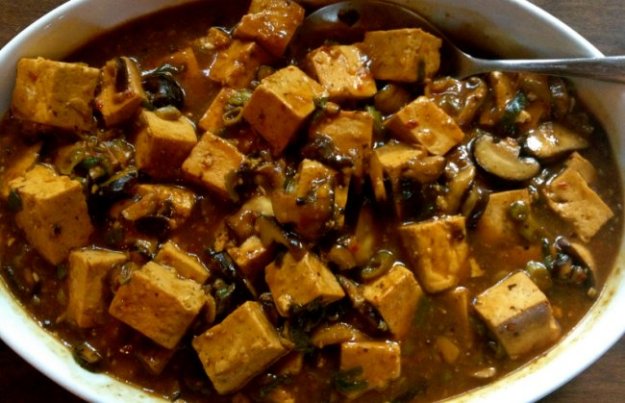
I think I say this all the time: this is one of my favorite dishes of all time. I must be a foodie. Let me go further – this is perhaps my most favorite dish of all time – as in indubitably top three. This is one of the heartiest dishes ever created and has an abundance of what the Japanese call umami. Umami is what the Japanese consider the 5th flavor along with sweet, salty, sour, and bitter. If you blindfolded a typical meat-eater and gave him a few bites the savoriness, richness, and texture could fool him or her.
It has a few simple ingredients: shiitake mushrooms, soft tofu, and covered in black bean sauce. Of course, accompanied by white rice. So incredibly mouth-watering and satisfying. If you are a vegetarian or vegan this will fill any cravings you may have had for meat or if you are ever in some dark point in the early stages of becoming one, this will help you stay on course.
Out of these dishes, this is the only dish I have found in only one restaurant and that is at Gumbo’s in Dartmouth.

While America has a love affair with Chinese dumplings, the “other” Chinese dumpling gets over-shadowed and neglected. Like dumplings, Shumai are little bundles of mouth-watering joy: a filling of either pork and/or shrimp, with green scallion, garlic, soy, ginger, a pinch of sesame wrapped in a wonton wrapper and steamed.
However, unlike traditional dumplings, Shumai are bite-sized which translates into trouble. You can’t just eat one. Variations of the meat may include scallop or crab, even vegetarian. Shumai are one of the cross-over foods from Dum Sum style restaurants. Dim Sum for those who have never been to a Chinese restaurant that serves this style of cuisine is the Chinese version of Spain’s Tapas. Considering the age of Chinese culture, it might be more accurate to say that Tapas is the Spanish version of Dim Sum.

Chinese style chicken with curry sauce is a simple dish: sliced chicken, sweet green peppers, and onions in a savory sauce of yellow curry, turmeric, and garlic. Occasionally you may come across places that put a little coconut milk in the sauce. Don’t be fooled though since these few ingredients are all one needs.
Anyone who is a fan of Asian cuisine in general knows that curries are found across the cuisine and with an astounding variety. The Thais, Vietnamese, Laotians, Indians and everyone else has a love affair with curries. They are so popular that if you go to the UK, every pub serves a curry due to the cultural exchange between England and India.
As far as I know, this dish and the yellow curry is a standard and there isn’t any variation beyond what is paired with the chicken. I have seen it with potatoes, but not on the SouthCoast.
Love fish? Here’s a look at Waterfront Grille’s pistachio crusted red snapper risotto special this week!